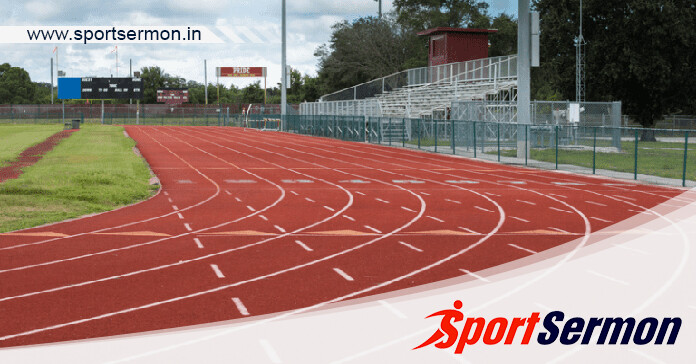Sports that involve varied physical activities, including walking, leaping, running, and throwing, are grouped as athletics. Athletics has many different event categories, but the most popular ones include sprints, long jumps, triple jumps, relay races, and throwing competitions. Every sporting competition is unique in many ways. Because they don’t require expensive equipment, track and field activities are one of the most popular sports worldwide. Scroll down to read Different types of Track and Field Events.
Sports often take into consideration individual player performances or team performances that are added together from several individual efforts. It has been a component of Olympic sports since the games’ founding in 1896. The International Association of Athletics Federations is in charge of organizing international athletic events.
Not many people are aware of this, but the word “athletics” has a somewhat varied meaning throughout the world. It is often used to refer to sports in general in North America. In the US and Canada, the term “Track and Field” is often used to refer to the majority of sports activities. Anyway, let’s go into the specifics of the many sporting activities, or the types of athletic events, and let’s learn how each athletic event is distinct from the others.
Track and field, road running, cross-country running, and race walking are the most broad categories of athletic events. Here is the list of Different types of Track and Field Events:
Different types of Track and Field Events
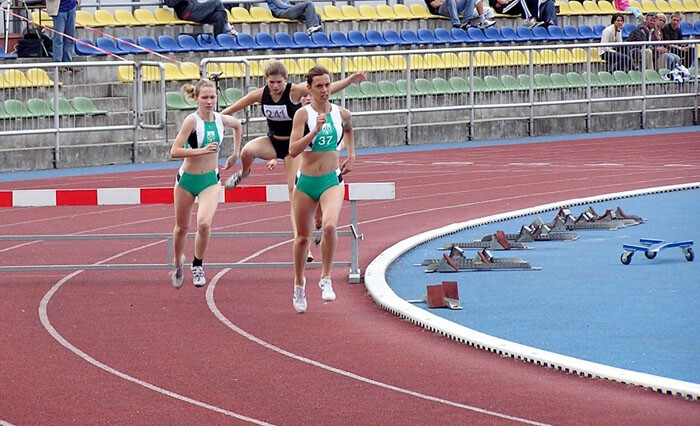
Complete List of Events in Athletics
The track and field events include activities that require abilities like sprinting, leaping, and throwing. Track and Field Events are competitions that take place on a field for throwing and leaping competitions or a running track for running competitions. Track events, field events, and combined events are the three main divisions of the Track and Field competitions. Jump and throws are the two different categories of field events.
Sprints (Running events in Athletics)
Sprints are short-distance races. It concentrates on accelerating to its top speed and moving across small distances as rapidly as feasible. The Olympic Games and Outdoor World Championships each have three sprinting events: the 100, 200, and 400 meters.
Middle Distance (Running events in Athletics)
The middle distances events typically consist of the 800 m, 1500 m, and mile run. Beyond sprinting competitions, endurance, and racing strategy are more crucial than speed. The 3000 m race is sometimes included in middle-distance track events.
Long Distance (Running events in Athletics)
Long-distance track competitions frequently include the 3000m, 5000m, and 10000m. In these kinds of physical contests, stamina, endurance, race strategy, and comparable abilities become far more crucial.
Relay Races (Running events in Athletics)
What are the types of relay races?
There are 2 types of relay races –
1: 4X100 M
2: 4X400 M
Relay races are the sole team event in track and field competitions. A team of four racers completes their distance runs before passing the baton to the following runner in a predetermined location. The 4100 m and 4400 m relay events are the most popular. 4200 m, 4800 m, and 41500 m relays are a few other less popular relays.
Rules of a relay race?
The main requirement for a relay race is that each competitor must carry a baton and pass it on to the following team members without losing it. The kind of relay event (4X100m or 4X400m) determines the distance that each participant must travel.
Within a 20-meter changeover box, the baton exchange must occur. Starting with the second participant, this box is situated 10 meters before and 10 meters after the beginning of each leg.
Hurdling (Running events in Athletics)
This category includes races that include obstacles or hurdles. The 100-meter hurdles for women, 110-meter hurdles for men, and 400-meter hurdles for both sexes are popular Olympic events that fall within this category. A few American tournaments also have the 300-meter hurdle.
What are the 3 hurdle races?
The most prominent hurdles events are –
1: 110 meters hurdles for men
2: 100 meters hurdles for women
3: 400 meters hurdles (both sexes)
Different types of Track and Field Events: Jump Events in Athletics
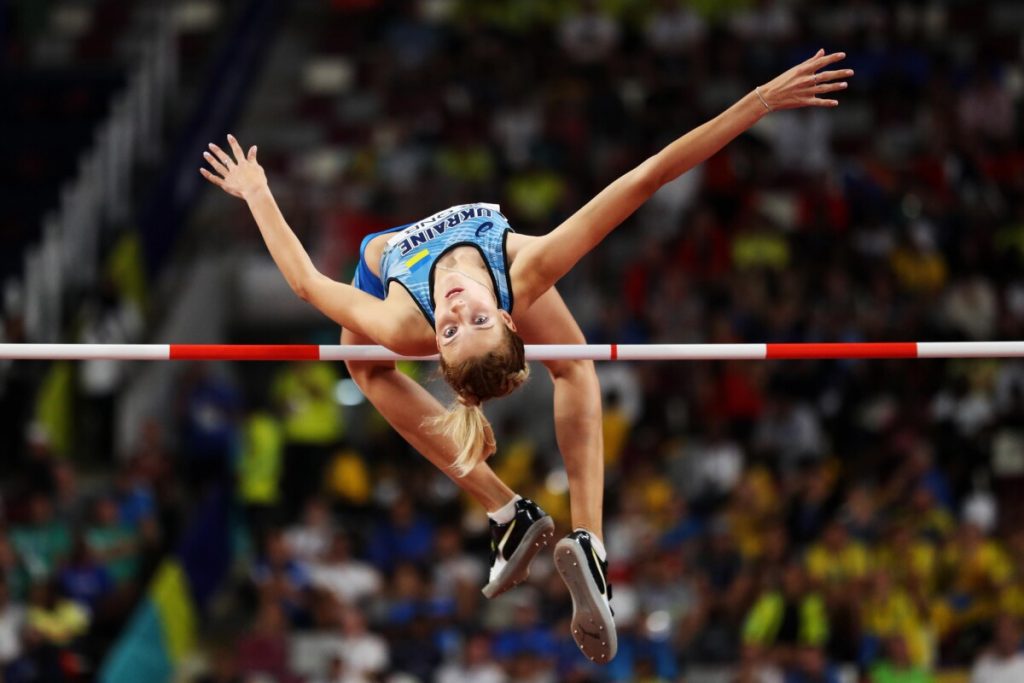
Long Jump (Jumping events in Athletics)
A leaping board and a sandpit come after the sprinting on the track by the athletes. Before a line that has been designated, athletes must jump. The obtained distance is then calculated starting from the closest area of sand the athlete’s body has disturbed. With the conventional form, there is also a standing long jump competition.
What are the 4 steps of the long jump?
The long jump can be broken down into 4 phases –
1: Run up,
2: Takeoff
3: Flight
4: Landing
What is the length and width of the long jump?
A minimum of 9 feet (2.75 meters) should be available in the long jump landing pit. Additionally, the space between the takeoff mark and the closer border of the landing pit must be at least 3 feet (1 m) and at most 10 feet (3 m) long.
Triple Jump (Jumping events in Athletics)
The long jump event is set up similarly to the triple jump competition. The athlete’s final two steps before diving into the pit are the sole difference. The motions involve hopping, stepping, and jumping. Standing triple jumps are extremely unusual in terms of competition, although they have been used as training exercises in various sports.
The triple jump can be divided into 3 major steps-
1: Hop
2: Step
3: Jump
High Jump (Jumping events in Athletics)
The participants do a brief run-up before launching into a leap over a horizontal bar, landing on the opposite side of a cushioned bed. The height of the bar is noted as the athlete’s registered height jump.
Pole Vault (Jumping events in Athletics)
The athlete jumps over a horizontal bar at a specific height while running down a short section of track, planting the pole in a metal box along the way. The athlete then releases the pole and tumbles backward onto landing mattresses. Unlike older models, which were often composed of metal, wood, or bamboo, current poles are typically constructed from man-made materials like carbon fiber or fiberglass.
Throw Events in Athletics
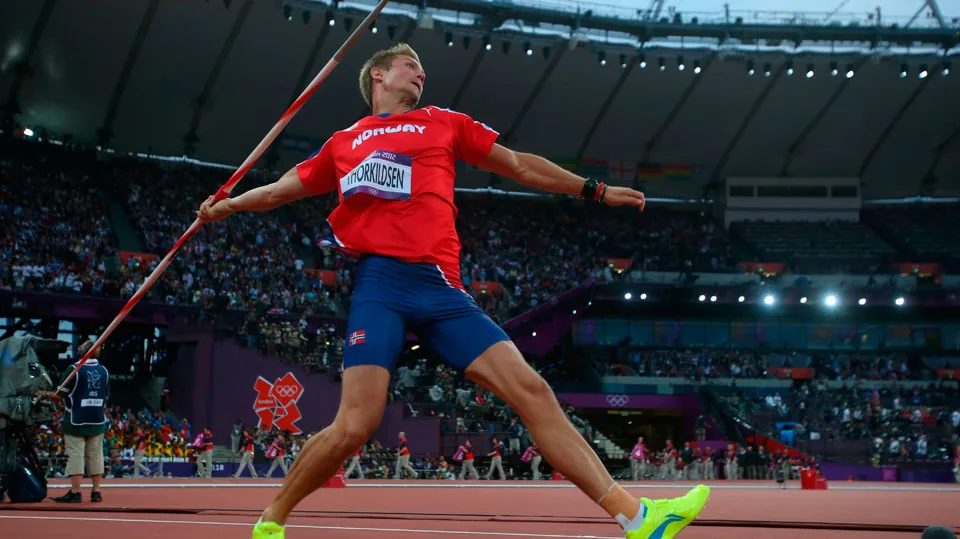
Shot Put: Shot put gets its name from the round shot-style ammunition used in the event. The athlete uses a circular area with a diameter of 7 feet to throw a 16-pound (7.26 kg) (4 kg for women) shot.
Discus Throw: The spherical shot put is replaced with a substantial disc in this competition. The disc has a 22 cm diameter and weighs 2 kg.
Javelin Throw: The athlete makes a quick sprint to the foul line before throwing the javelin. The javelin’s current dimensions are 2.2 to 2.3 meters in length and 600 grams for women, and 2.6 to 2.7 meters in length and 800 grams for men.
Hammer Throw: A cable with a length of 1.175-1.215 meters is linked to a metal ball that weighs 16 pounds (4 kilograms for women). This is turned around and hurled at an angle of no greater than 34.92 degrees.
The standard weight of the hammer is – 7.26kg for men, 4kg for women
Events in Athletics: Combined Events
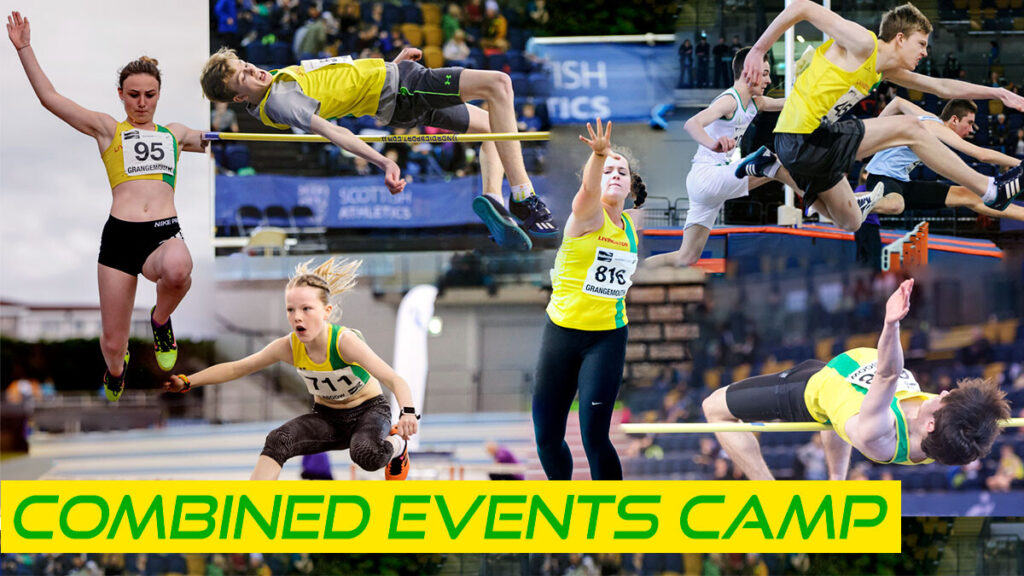
Men’s decathlon and Women’s heptathlon are the two most popular combination events. The winner is determined by adding all of the points the athlete has earned by participating in the various events. The indoor edition of combined events only includes the men’s heptathlon and the women’s pentathlon due to stadium restrictions.
Road Running Events in Athletics
This section consists of events that are run on the road, as opposed to the track and field events where the run is on designated running tracks. On the measured courses, these competitions are held on recognized roadways. These are lengthy runs, ranging in length from 5 km to 42.2 km for a marathon. In such competitions, aerobic endurance and stamina are essential for success. The nine standard road race lengths that the IAAF recognizes are the 10 km, 15 km, 20 km, half-marathon (21.097 km), 25 km, and 30 km, marathon (42.195 km), 100 km, and Ekiden marathon relay.
Cross Country Running
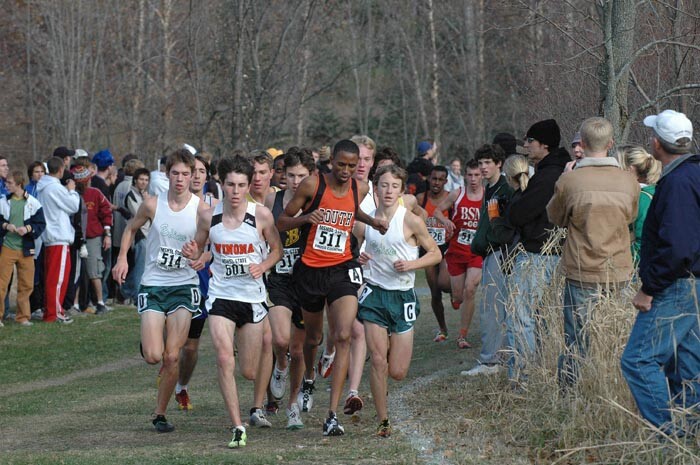
It is long-distance running over a natural surface. Teams or individuals compete in this event by running across natural terrain courses made up of grass, hills, level land, gravel roads, etc. Typically, the courses are 4–12 kilometers long. According to the IAAF, a cross-country course should include a circle that is 1,750 to 2,000 meters long. As much as feasible, it should be covered in grass and have rolling hills “with smooth curves and short straights”.
It is appropriate for the principal surface to be dirt or snow depending on the local climate. The courses should be able to reduce the amount of time spent running on roads or other paved surfaces. Golf courses and parks are frequently appropriate settings for the same. The positions at which each player crosses the finish line serve as the only foundation for the team’s score. The team score is the sum of all individual scores, and each player’s score corresponds to his or her location on the pitch.
Race Walking
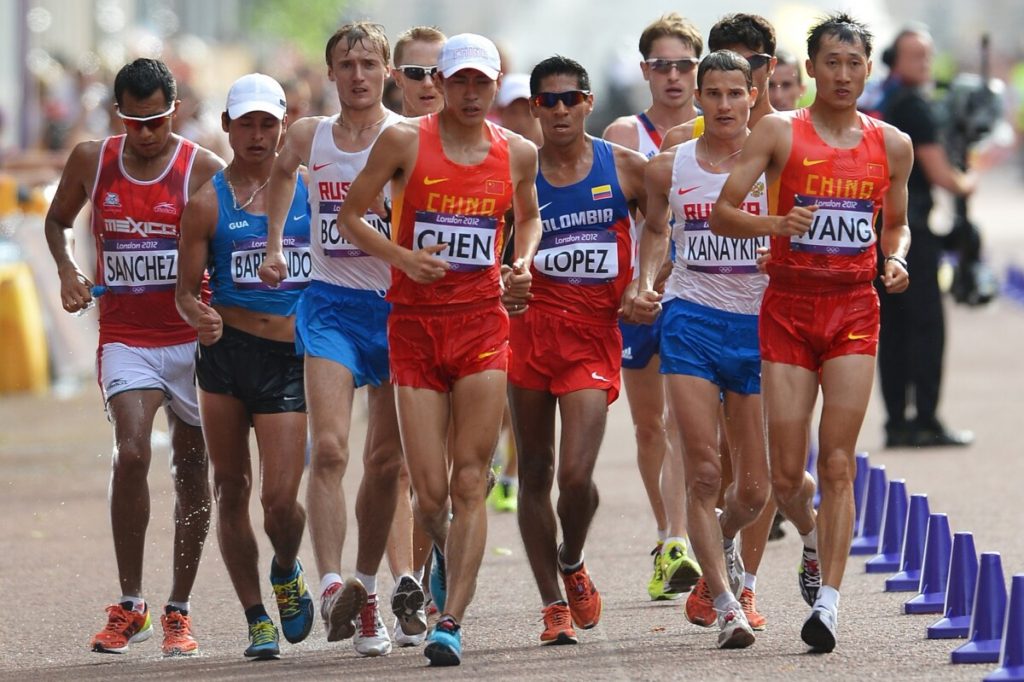
One of the most unusual sporting competitions is this one. Race The type of foot racing known as walking requires that one foot remain firmly planted on the ground at all times. The evaluation is the responsibility of the race judges who are watching from the sidelines. The 20-kilometer race walk (for men and women) and the 50-kilometer race walk (for men only) are the two racewalking distances that will be competed in at the Summer Olympics.

